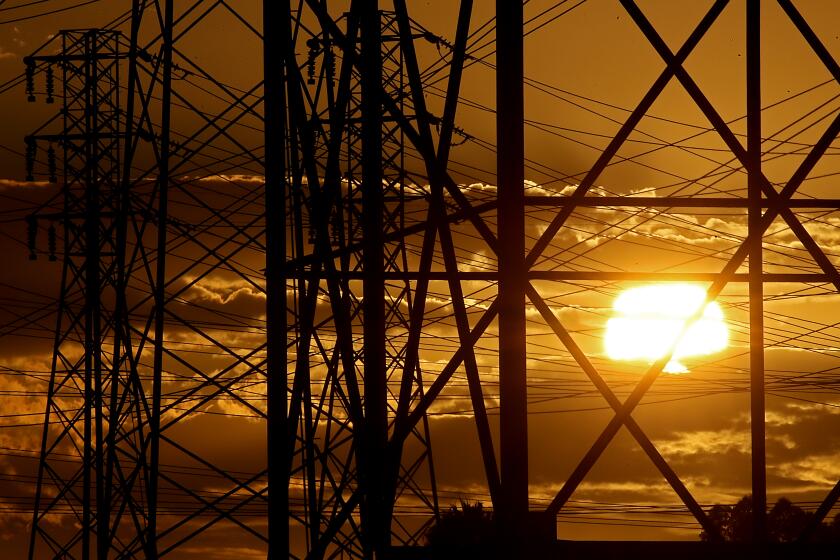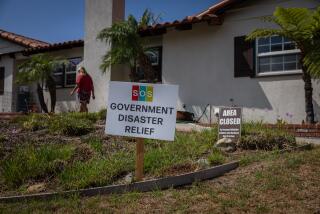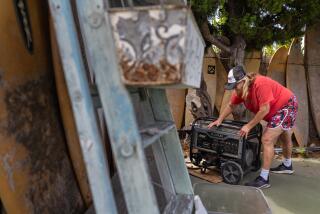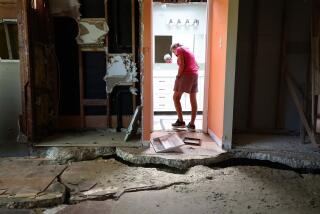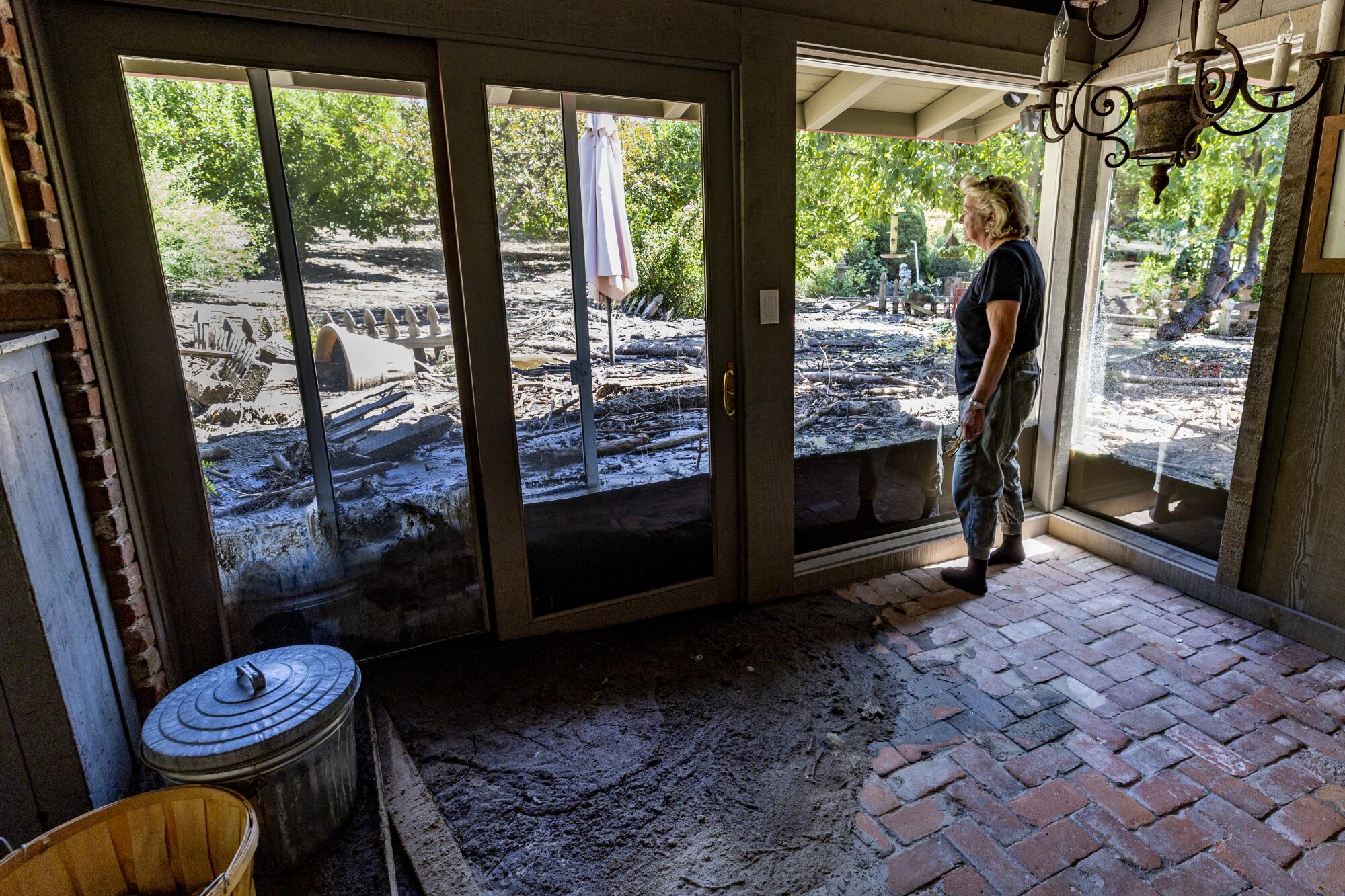
For months, Oak Glen resident Meg Grant emailed pleas to local officials: Residents needed help preparing for the next rainstorm.
In December, rainstorms brought mud, tree limbs and debris into their yards, Grant told San Bernardino County Supervisor Dawn Rowe. Residents knew the risks of living in the mountains, Grant said, but the 2020 fire left them vulnerable to mudflow raging down Birch Creek, which runs through many of their properties.
The dreaded day arrived Sept. 12 when the remains of Tropical Storm Kay brought 2.4 inches of rain within an hour and produced an immense debris flow that damaged or destroyed 16 homes. Car-size boulders came crashing down in Forest Falls, a small mountain community north of Oak Glen. A 62-year-old Forest Falls resident died as the flood of rocks, sticks and mud overtook her home.
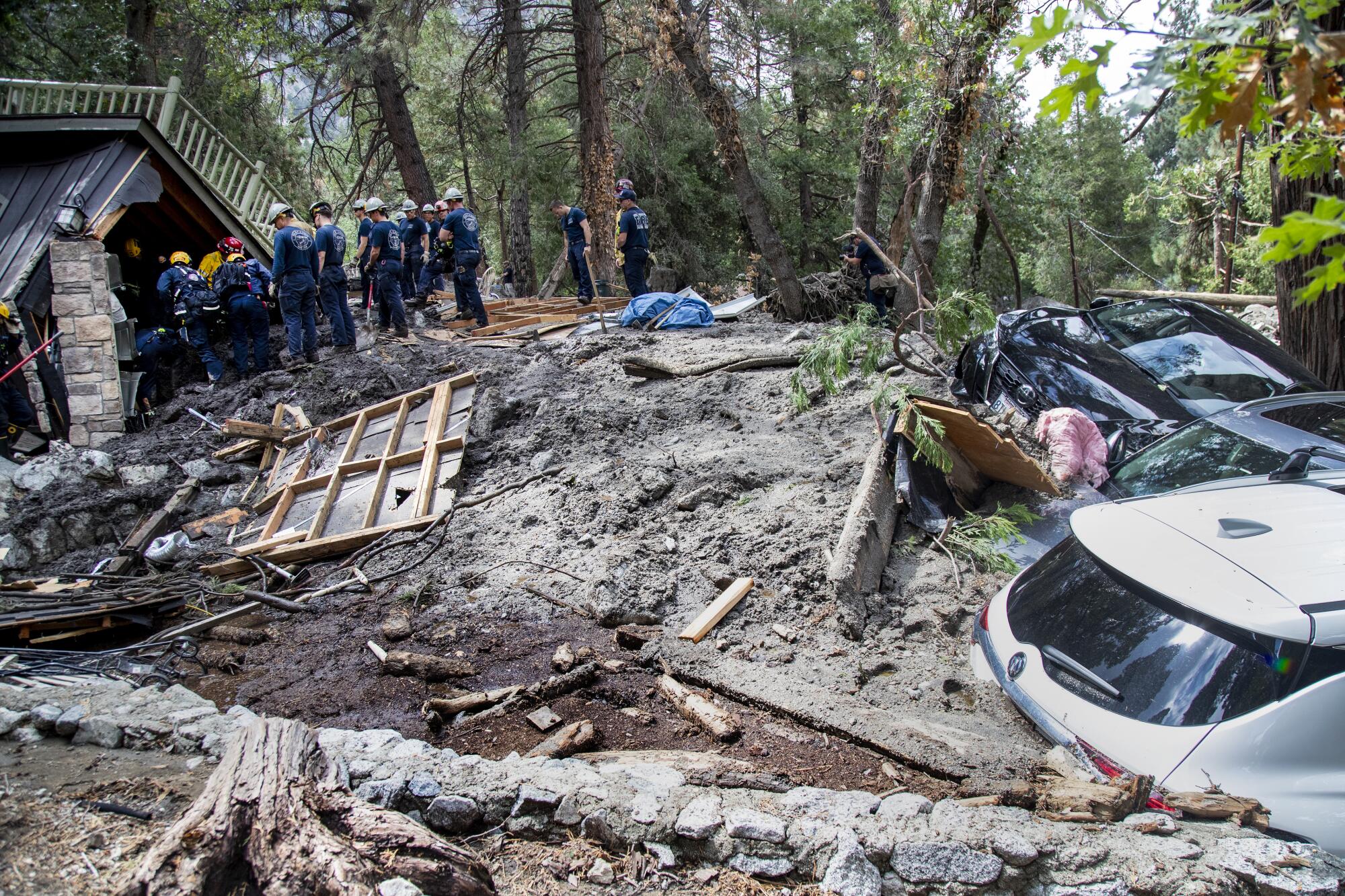
The seed of the disastrous mudslide — which overwhelmed a county-run flood channel and buried some areas in 12 feet of mud — was planted two years ago when the El Dorado fire scorched 22,680 acres on Yucaipa Ridge, producing a burn scar that left the mountain bare and prone to rapid erosion.
“They knew this was a problem,” said Grant, who grew frustrated when the county said it could do little to help residents in fortifying their homes.
In the mountains, residents recognize the risks and rewards they trade for living in remote areas. For fresh mountain air and acres of wooded land, they face wildfires, floods and debris flows.
But some residents in the unincorporated communities of Oak Glen and Forest Falls feel especially vulnerable now. They are frustrated that San Bernardino County officials have told them the county is limited in how it can use public dollars to safeguard private land and residents.
“It’s not like I’m asking the county to come and dig a pool for me,” said Brenda Ebrahim, who believes the county should create a catastrophic fund to help residents. “I’m asking for help to recover from a disaster not of my making.”
In Oak Glen, Birch Creek intersects the community. The county is responsible for maintaining a portion of the creek where it flows through a channel constructed in 1965, built to catch and direct runoff, said Brendon Biggs, the county public works director.
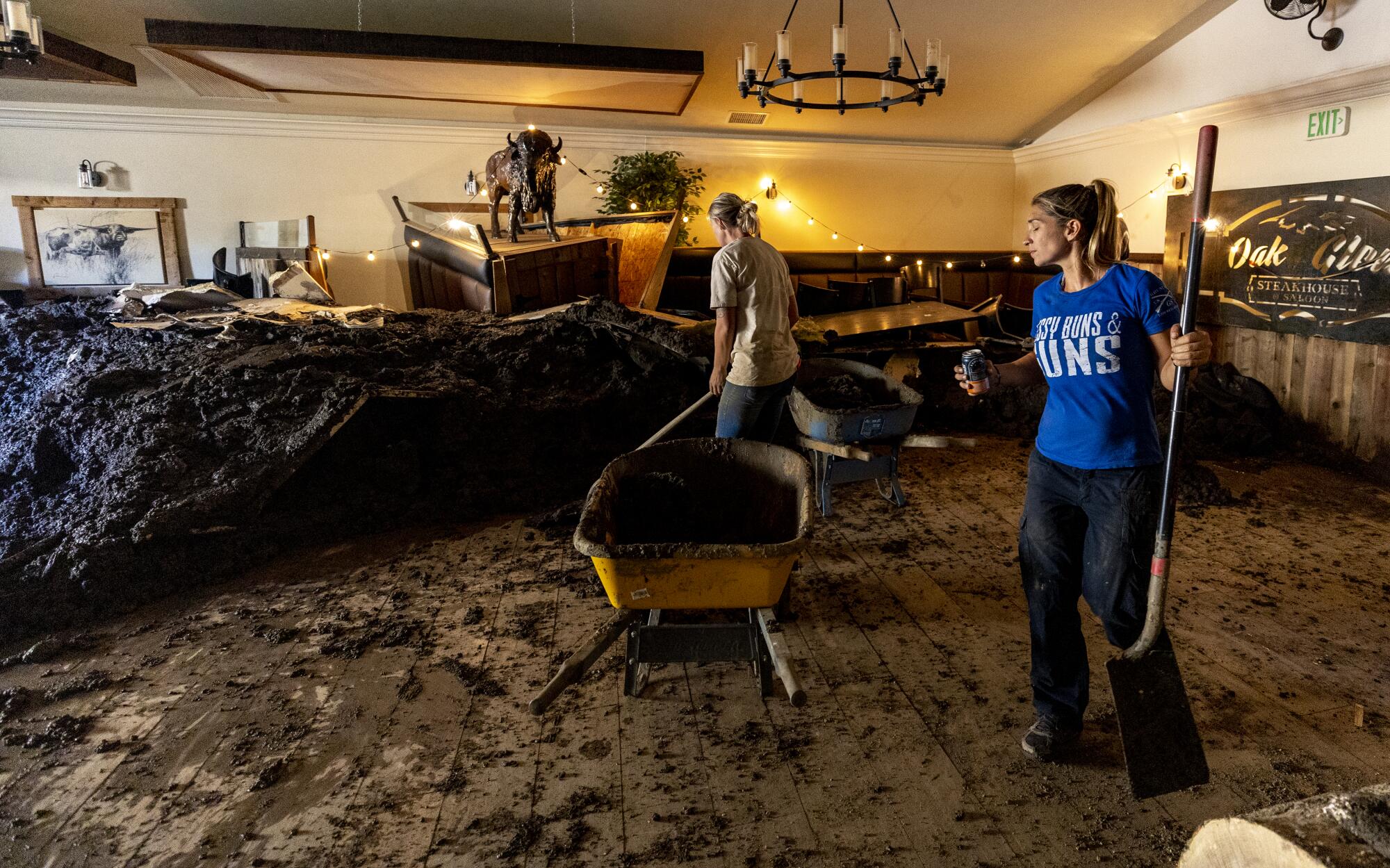
On Sept. 12, the county’s alert system and the National Weather Service sent out notifications to residents, Biggs said. About 3 p.m., the rain came down more intensely than anticipated, right on the burn scar on the ridge between the two communities, unleashing a flow of mud, rock and boulders. K-rail barriers were overwhelmed, and the debris crashed into Oak Glen Steakhouse & Saloon. A tree hurtled into the main dining area. The restaurant, which was closed that day, was buried in at least six feet of mud.
“Before the fire, this whole [flood control] system worked fine,” Biggs said. “The hillsides are now very active, bringing in mud…. No system can really handle all of that.”
County officials maintained that, by law, they could not fund efforts to build or maintain their property.
Rowe, in a statement, said she “will be working hand in hand with residents” to secure state and federal funding. The county Board of Supervisors issued an emergency declaration to more easily seek disaster aid for the affected communities.
But some residents thought the county should have done more — and still should as winter approaches with more storms.
They pointed to the January 2018 debris flow in Montecito that killed 23 people and destroyed 130 homes. That slide followed a wildfire that had scorched the mountains above the seaside community just weeks before. A Times investigation found that Santa Barbara County officials had failed to maintain the flood control system and build bigger debris basins that could have lessened the mudslide’s destruction.
Though the latest debris flow was not nearly as catastrophic, some residents remain worried that there is still plenty of loose debris ready to come down in another storm.
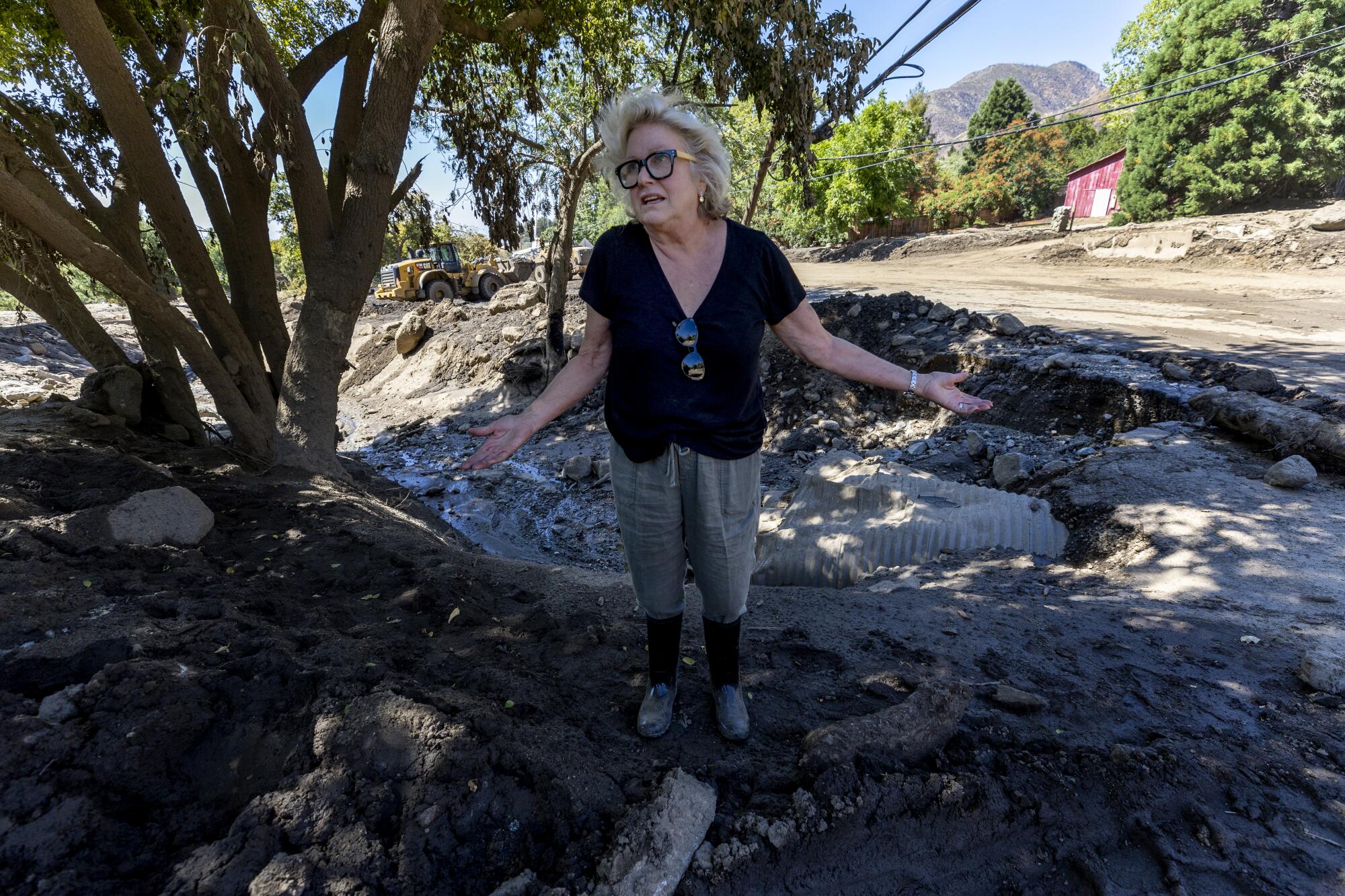
It could have been a lot worse. Grant’s driveway and yard disappeared under a layer of mud and large rocks, and mud breached her house in some rooms. But she avoided significant structural damage. Next door, Ebrahim’s house was untouched, but the debris covered much of her property and blew the doors off her barn.
Ebrahim, who has lived on Potato Canyon Road for 13 years with her family, said it will cost tens of thousands of dollars to replace her barn and fences and remove the debris. She said the county has told her to clean out the creek bed that is part of her property and put up barriers, which she has tried to do. But they are no match for the onslaught of debris.
“We’ve been begging for help for years since they told us this was going to happen,” Ebrahim said. “I’ve been through it, I know how it works. It’s not sustainable. This is California’s new reality.”
It takes an emotional toll. Ebrahim recalled how hours after the mudslide struck, she trekked up to Potato Canyon Road and found her horses, Almond Joy and Charlie, stuck in the mud, their legs completely covered and bruised by the debris. With sunlight fading, she agonized as she was forced to leave them for the night, with no food or water. It wasn’t until the next morning, with the help of another neighbor, was she able to dig them out.
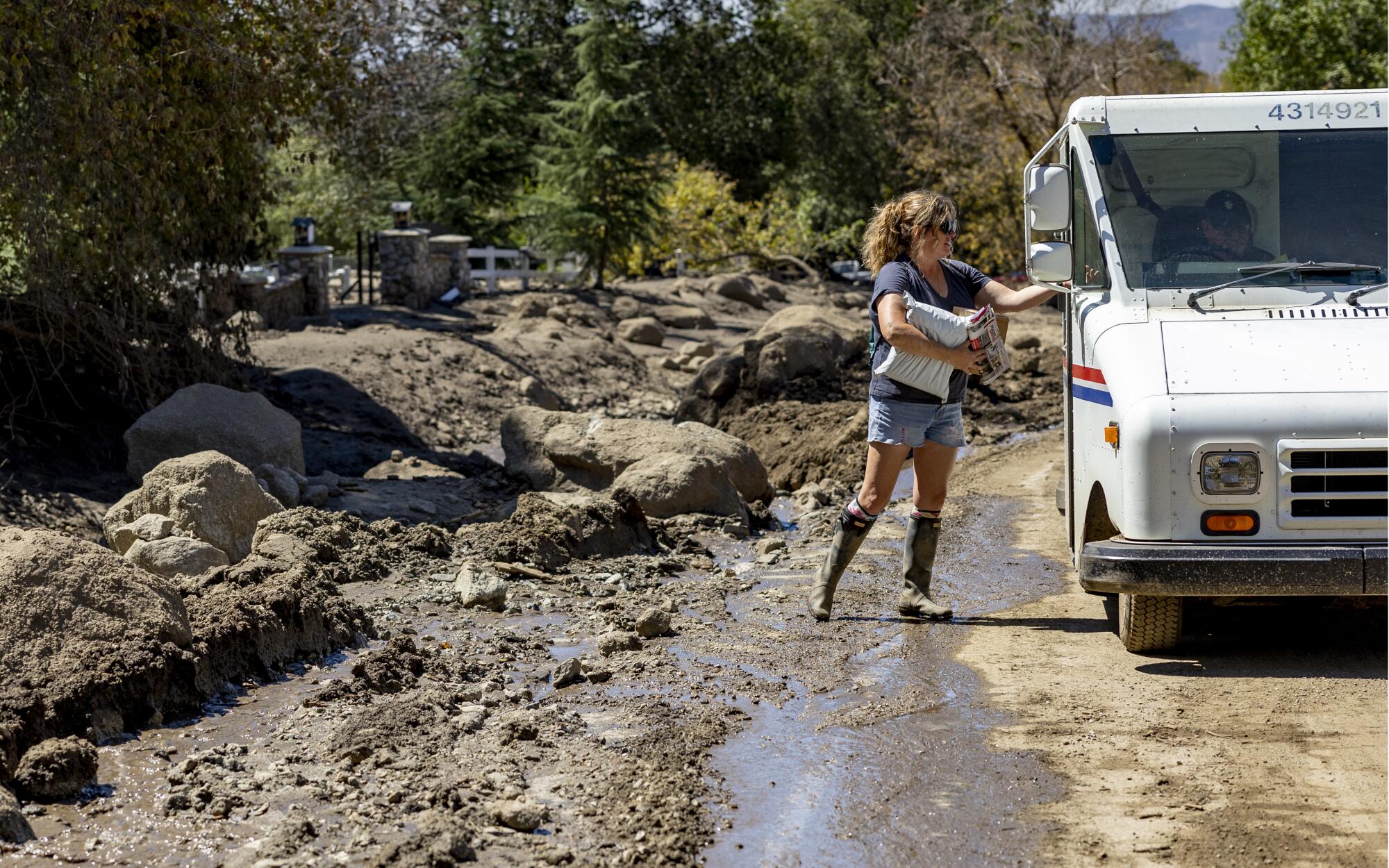
On a recent Thursday afternoon, Ebrahim watched as the mail carrier paused, searching for her washed-away mailbox. She flagged him down and got her mail.
“Good luck,” he told her. “You’d think the county would do something.”
“No, they’re not going to help us. We already figured that out,” she said.
“That’s too bad,” he said.
Longtime resident Jim Wolfe’s home and property sits along Birch Creek and across the county-maintained channel. Given his precarious spot, the county placed K-rails along his property to protect it from runoff.
They kept his home safe from previous rainstorms. But on Sept. 12, Wolfe watched from his car up the hill as wave after wave of mud and debris overwhelmed the K-rails, knocked his front door off its hinges and tore down all but one support beam on his front porch.
Inside, three days later, furniture remained buried, trapped in time. A K-rail hung half out the window, entombed in the mud in the house.
Wolfe said he believed the county did what it could to keep his property safe. Nearby, dump trucks and skid steers roared and clattered as they cleared debris from the channel across the road.
“The county’s been great. They did a lot of preventive stuff,” Wolfe said. “This time it was just crazy.”
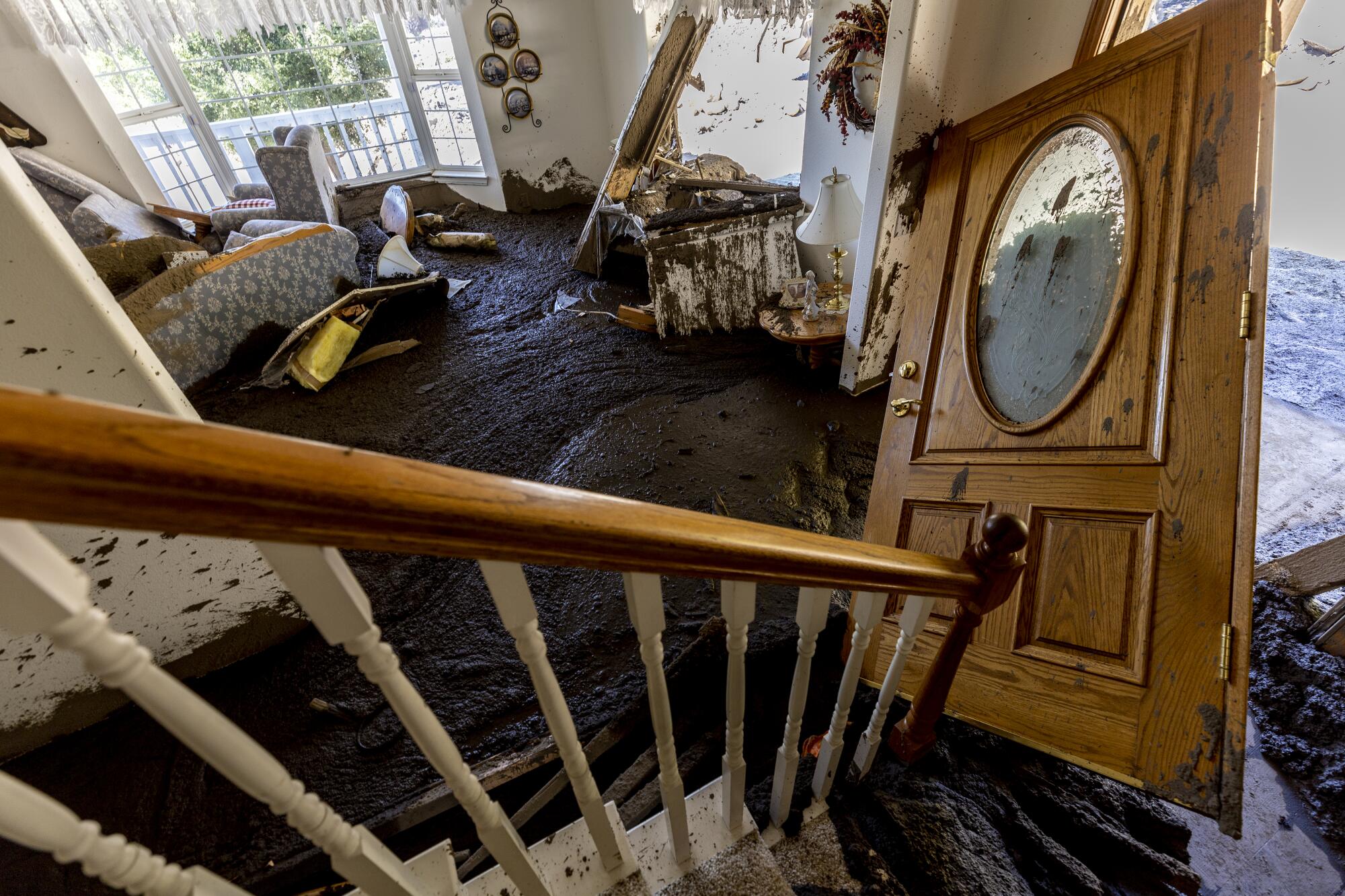
Over the ridge, in Forest Falls, where the El Dorado fire burned to the edge of town, residents are keenly familiar with the unpredictability of nature’s blows.
When the rain began, Zachary Roop and his girlfriend were home on Prospect Drive, enjoying the lulling sound of the rain. He heard a loud noise. Roop went to check it out, wondering if he needed to rearrange the sandbags he had put out in front of the home.
He watched through his window as a wall of mud came barreling toward them, carrying boulders the size of trucks “like a rubber ducky on a pond.”
He tried to run back to his bedroom and found that his den was gone. He and his girlfriend managed to escape and stayed with a neighbor; but his home for the last 15 years, which he hand-built with his father, was destroyed.
He wondered whether more fortifications, like a stone wall, or more resources for residents in maintaining the wash that ran alongside his property, could have helped.
“I don’t know what the right answer is,” he said.
Across the street, the body of Doris Jagiello was found buried in her home Sept. 15, authorities said. One of her dogs survived.
Other parts of Prospect Drive, like Gabriel Valencia’s home, remained untouched. But years ago, Valencia and his wife were hit hard by a mudslide that flooded their yard and took out his fence. He said the situation was made worse by a configuration of county-maintained storm drains — one that in effect directed runoff onto his property, and one downstream that did not drain it nearly as quickly.
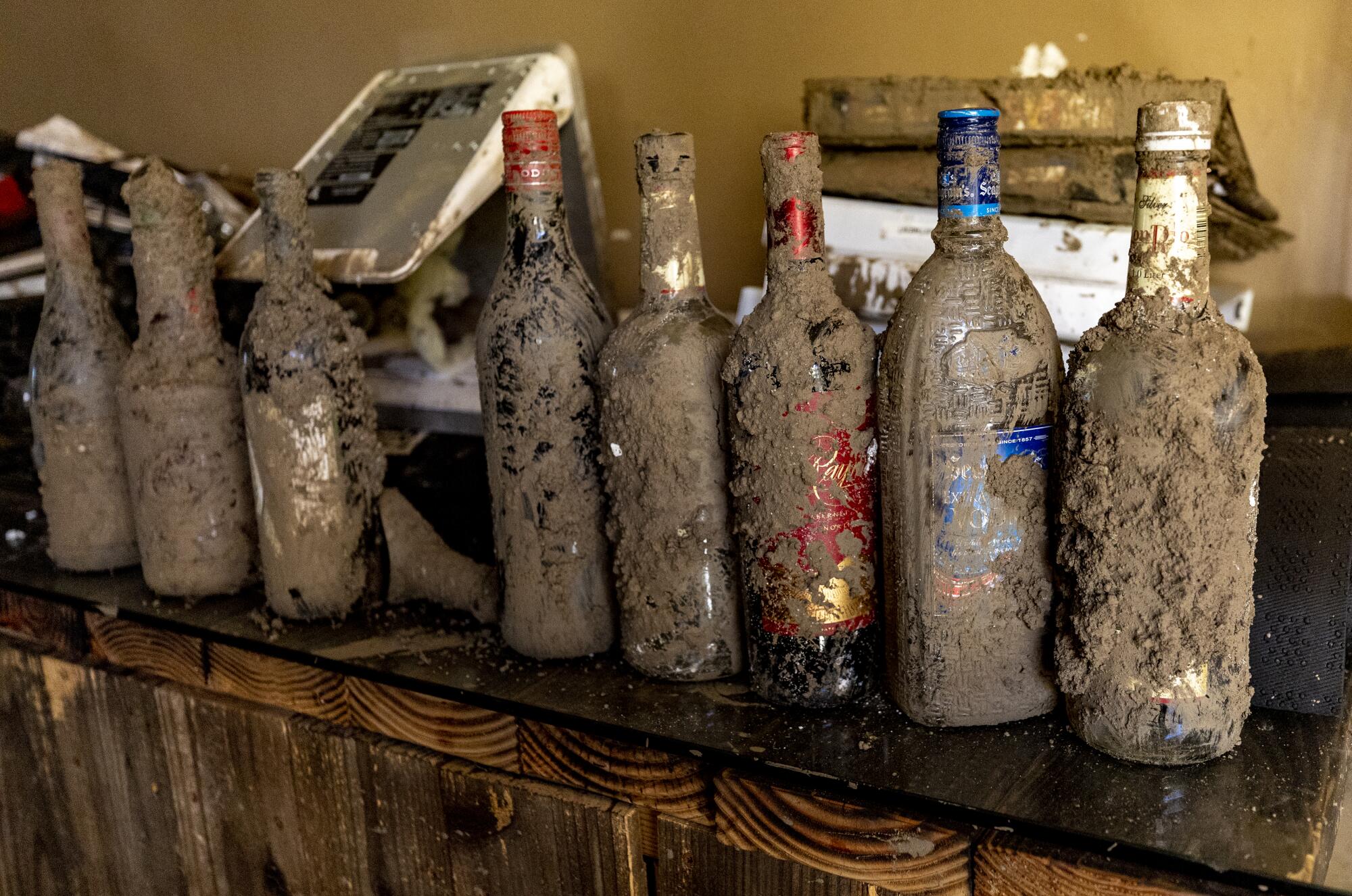
Valencia spent more than $50,000 in repairs and construction, he said, including building a 2-feet-thick stone wall around his property. Still, he worries about the storm drain.
Like other residents, Valencia acknowledges the responsibility of homeowners in living up in the mountains. But he is also hoping to get assistance from the county in better maintaining the downstream steel pipe to try to keep any future waves of mud and debris away from his home.
He looks forward to the vegetation on the ridge regrowing and returning to a sense of normalcy.
“A lot of us feel these are once in a lifetime. My house may be adversely impacted, but I want to stay,” Valencia said.
Now homeless, Roop said he and his girlfriend, along with their cat, Tilly, are trying to figure out what comes next. They did not qualify for housing vouchers, he said, and he has run out of funds for a motel.
Roop said he’s grateful to neighbors who helped look for their cat and are organizing an effort to help clear his driveway. Although the county cleared the roads, it does not clear private property land.
Nicole and Avery Duncan, longtime residents of Forest Falls, sat outside their home on a Monday afternoon, watching the county’s orange dump trucks go by as they cleared the roadway of debris.
Nicole said that after the county finished, they planned to take their backhoe and skid steer and try to begin clearing driveways for neighbors, including Roop, whose homes were inundated by the mud.
“It’s what we do up here for each other,” Nicole said.
Be in the loop when disasters — like extreme heat or a hurricane this week, or earthquakes, tsunamis and wildfires at other times — are headed California’s way.
More to Read
Sign up for Essential California
The most important California stories and recommendations in your inbox every morning.
You may occasionally receive promotional content from the Los Angeles Times.
